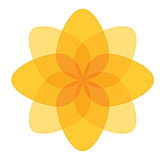Plaid Cymru – The Party of Wales | |
|---|---|
 | |
| Leader | Rhun ap Iorwerth |
| Chairman | Alun Ffred Jones |
| Chief Executive | Rhuanedd Richards |
| Honorary President | Dafydd Wigley |
| Founded | 5 August 1925[1] |
| Headquarters | 18 Park Grove, Cardiff, CF10 3BN Wales |
| Ideology | Welsh independence Social democracy |
| Political position | Centre-left |
| European affiliation | European Free Alliance |
| European Parliament group | Greens-EFA |
| International affiliation | none |
| Colours | Green and yellow |
| Website | |
| www.plaid.cymru | |
Plaid Cymru (Welsh for 'The Party of Wales'; Welsh pronunciation: [ˈplaɪd ˈkəmri]; often shortened to Plaid) originated in 1925 after a meeting held at that year's National Eisteddfod in Pwllheli, Caernarfonshire (now Gwynedd).[2] Representatives from two Welsh nationalist groups founded the previous year, Byddin Ymreolwyr Cymru ("Army of Welsh Home Rulers") and Y Mudiad Cymreig ("The Welsh Movement"), agreed to meet and discuss the need for a "Welsh party".[3] The party was founded as Plaid Genedlaethol Cymru, the National Party of Wales, and attracted members from the left, right and centre of the political spectrum, including both monarchists and republicans. Its principal aims include the promotion of the Welsh language and the political independence of the Welsh nation.
Although Saunders Lewis is regarded as the founder of Plaid Cymru, the historian John Davies argues that the ideas of the left-wing activist D. J. Davies, which were adopted by the party's president Gwynfor Evans after the Second World War, were more influential in shaping its ideology in the long term.[4] According to the historian John Davies, D. J. Davies was an "equally significant figure" as was Lewis in the history of Welsh nationalism, but it was Lewis's "brilliance and charismatic appeal" which was firmly associated with Plaid in the 1930s.[4][5][6]
After initial success as an educational pressure group, the events surrounding Tân yn Llŷn (Fire in Llŷn) in the 1930s[7] led to the party adopting a pacifist political doctrine. Protests against the flooding of Capel Celyn in the 1950s further helped define its politics. These early events were followed by Evans's election to Parliament as the party's first Member of Parliament (MP) in 1966, the successful campaigning for the Welsh Language Act of 1967 and Evans going on hunger strike for a dedicated Welsh-language television channel in 1981.
Plaid Cymru is the third largest political party in Wales, with 11 of 60 seats in the Senedd. From 2007 to 2011, it was the junior partner in the One Wales coalition government, with Welsh Labour. Plaid held one of the four Welsh seats in the European Parliament, holds four of the 40 Welsh seats in the UK Parliament, and it has 203 of 1,253 principal local authority councillors.[8] According to accounts filed with the Electoral Commission for the year 2018, the party had an income of around £690,000 and an expenditure of about £730,000.[9]
- ^ "Our History". Plaid Cymru. Archived from the original on 4 September 2012. Retrieved 4 August 2011.
- ^ John Davies, A History of Wales, Penguin, 1994, ISBN 0-14-014581-8, Page 547
- ^ Davies, op cit, Page 547
- ^ a b John Davies, Wales and America
- ^ Why Not a Welsh Royal Family? by Siôn T. Jobbins, January 2008, Cambria magazine
- ^ John Davies, A History of Wales, Pages 591, 592
- ^ Cite error: The named reference
Daviesp593was invoked but never defined (see the help page). - ^ "Open Council Data UK – compositions councillors parties wards elections". opencouncildata.co.uk. Retrieved 13 May 2020.
- ^ "View statement of accounts – The Electoral Commission". search.electoralcommission.org.uk. Retrieved 13 May 2020.
